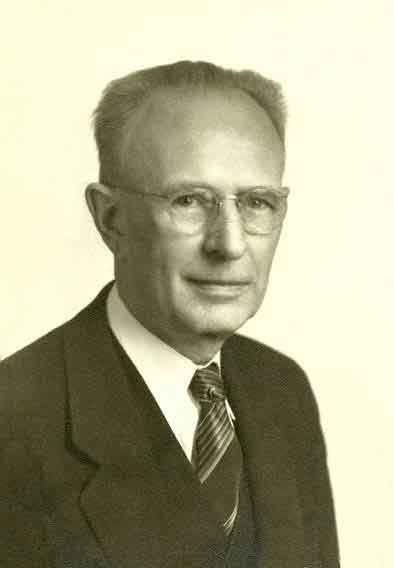Little known Elgin hospital remembered by best friends
Published 7:30 am Wednesday, April 19, 2017

- Little known Elgin hospital remembered by best friends
ELGIN — LaVeta Botz, of Elgin, and Barbara Beickel, of La Grande, have known each other since 1951.
They have a lot in common, including their birthdate on April 7, 1938. They are also joined together by a nearly forgotten piece of Elgin history, a house Botz calls home and Beickel calls her birthplace.
The “Law Hospital,” as it was called, was open for about three years — 1936 to 1939 — and was touted in a May 31, 1939, edition of The Observer as “Elgin’s hospital, only one for miles around.”
“Elgin is proud of Dr. Charles Law’s new and well-equipped hospital,” the article said. “It is the first hospital ever constructed in Elgin and is equipped with up-to-the-minute provisions.”
The Law Hospital was situated at the present address of Angler’s Rest Bed-and-Breakfast, 1000 Division St. in Elgin, owned and operated by Ed and LaVeta Botz. However, in 1938, it wasn’t tourists who occupied the beds but rather birthing mothers and patients recovering from surgeries.
“LaVeta told me that she sleeps in the operating room where I was born,” Beickel said.
Beickel was born Barbara Sutton, the daughter of the late Harold and Katherine Sutton. On April 7, 1938, Katherine, then 23, gave birth to Barbara at 7:35 p.m., assisted by Dr. Charles H. Law and his wife, Florence, a nurse.
“Mother said that when she was in the delivery room, Dr. Law gave her anesthesia called ‘twilight sleep,’” Beickel said. “We stayed at the hospital for 12 days after my birth.”
That kind of maternity stay was customary in those years. Birthing mothers were especially pampered at the Law Hospital. They rested, nursed their babies and ate meals prepared for them in Florence Law’s kitchen. It was no wonder that every mother in the area wanted to have their babies there, Beickel said, but with only four beds, that wasn’t always possible. Still, Beickel said, several of her school classmates were born there, including Larry Gilliam, sisters Beverly and Betty Carol Wade, Joyce Waelty, Bob Kennedy and Marlys Myers.
“Mrs. Law maintained a clinic for the supervision of babies born in the hospital,” the May 31, 1939, Observer said. “The babies were brought in once a week, weighed and checked. Over 40 babies are born there each year.”
The history of Dr. Charles Law in Union County traces back to his 1932 arrival in North Powder, where he established a drugstore. Law practiced medicine in Union for several years, after which he sold his North Powder drugstore to Dr. Clarke E. Saunders, of Union, and set up the hospital in Elgin.
“Reconstructed from an old brick residence, the hospital has been scientifically arranged with four hospital beds, kitchen, surgery and waiting rooms,” The Observer story said. “Dr. Law has his own ambulance and supplies of drugs and dressings. Immediate attention is afforded patients of the vicinity since Dr. Law also lives in the hospital.”
The property lies in the Hindman Division, and Henry Hug built a small wooden home there. The house is noted on a 1900 Sanborn map of Elgin on the corner of C Street, which is now Division Street, and Elgin Avenue, now 10th Avenue.
Botz’s husband, Ed, said he crawled under the building at one point and saw remnants from the foundation of the first wooden home on the property.
“I think the original house was probably all torn down and rebuilt in 1904 into what it is today,” he said. “It was a shiplap structure and then the red brick was put on around it with a 4-inch space between them. There used to be a red brick foundry in Elgin, so the bricks were made here.”
The 1930 Sanborn map seems to corroborate his two-home theory, showing the 1904 house at nearly double the size of the earlier 1900 home. The enlarged, red brick home is what the Laws purchased and remodeled into their hospital in 1936.
Beickel said the Law family lived upstairs. LaVeta Botz said there were also three recovery rooms upstairs equipped with small sinks and mirrors. Downstairs was another recovery room, a waiting lobby, an examining room, a kitchen, a nursery and an operating room.
“There was a door by the closet (in the downstairs lobby) that went right through to the operating room, our bedroom,” Ed Botz said. “I think that was the emergency room, in case someone came in they could go straight into the emergency room.”
The Law Hospital was equipped for ER services. It was stocked with sterilizers and an oxygen tank kept ready for use at all times. Apparently there were no lack of stories to be told about emergency care there. The May 31, 1939, Observer story described Law as a physician “who is full of tune-up time anecdotes about cases he has treated where immediate treatment was imperative.”
The golden years of health care provided at the Law Hospital during the later 1930s came to a premature close when Florence Law contracted a serious bacterial infection called tularemia, also called rabbit fever or deer fly fever. The disease mainly affects mammals, especially rodents, rabbits and hares, although it can also infect birds, sheep and domestic animals such as dogs, cats and hamsters. As part of her treatment, her husband moved her to Amity for a quiet recovery in September 1939. He sold his practice and hospital in 1939 to Dr. Ivan Bennett, who had been practicing in Elgin for a year.
“After that, I remember the building being used more like a doctor’s office and not a hospital anymore,” Beickel said. “Dr. Bennett didn’t perform surgeries like Dr. Law did.”

